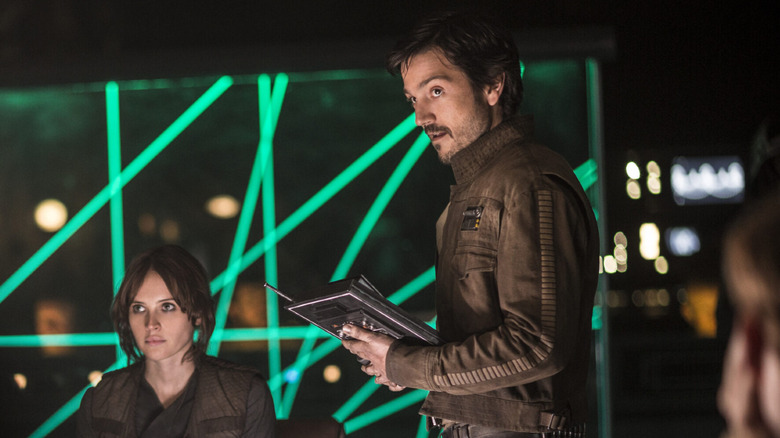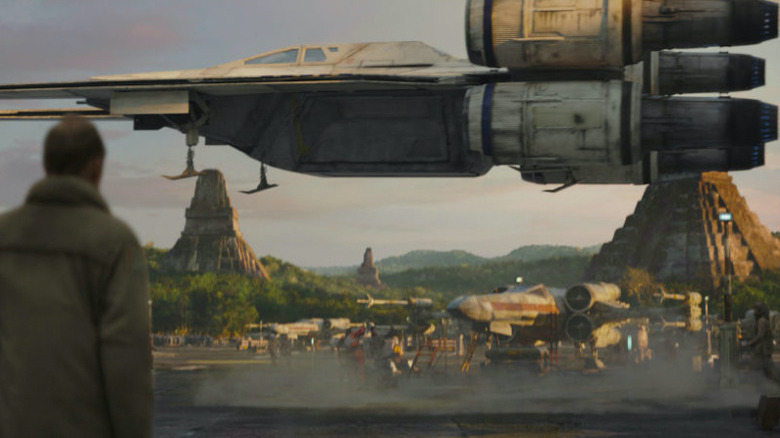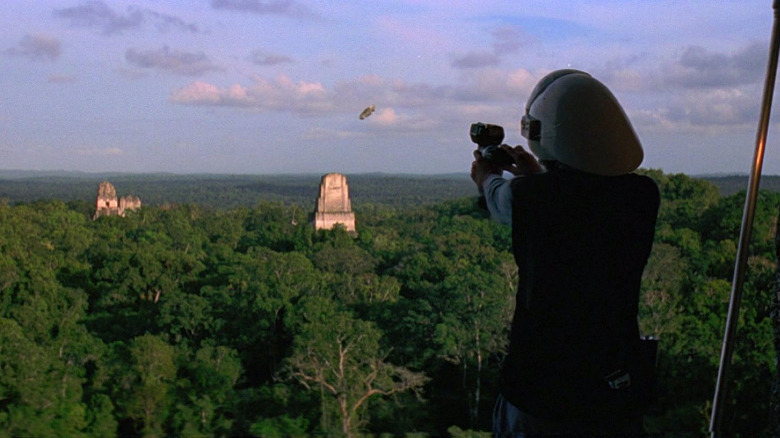Everything You Need To Know About The Star Wars World Yavin As Andor Heads There For Season 2
There are plenty of reasons why "Andor" is being heralded by many people (this author among them) as the best live-action "Star Wars" series to date, not least of which is the show's disinterest in Easter eggs. Not that there's anything wrong with some fan service here and there in small doses. But where other live-action series set in a galaxy far, far away have often been guilty of cramming in nods to the greater "Star Wars" universe at the expense of their storytelling, "Andor" has so far avoided that approach. What's more, the few references it has made to other "Star Wars" films and series have taken on the form of name-drops that subtly lay the groundwork for what's to come while also being relevant to the events at hand.
Fingers crossed, this will remain the case when "Andor" returns for its second and final 12-episode season on Disney+, even as it lays down the final pieces of foundation for the 2016 film "Rogue One: A Star Wars Story." Speaking to Collider, "Andor" creator and showrunner Tony Gilroy affirmed the "Rogue One" prequel/spinoff series will "really weave [its] way back to the source" in season 2, bringing in characters and visiting places that "Star Wars" fans know all too well. That includes Yavin, a key location that's been part of "Star Wars" since the very start. Here's everything you ought to know about Yavin ahead of its first appearance on the show.
That's no moon, it's a ... wait, no, it's a moon
The term "Yavin" is both the name of a star system and the term commonly used to refer to Yavin 4, the fourth moon in orbit around the gas planet Yavin Prime. Yavin 4, of course, features prominently in the third act of 1977's "Star Wars: A New Hope," where it serves as the location for the Rebel Alliance's hidden base of operations and the backdrop for the Battle of Yavin. "Rogue One" similarly pays a few visits to the moon prior to the film's climactic battle on the planet Scarif.
In George Lucas' initial script draft for "A New Hope," entitled "The Star Wars," Yavin 4 is simply called "Yavin" and is described as a jungle-like planet populated by "two-foot high insect-like" creatures, an early iteration of the Wookiee species, and other "unearthly" life forms that are heard but never shown roaming among the world's "gargantuan trees." Naturally, Lucas' vision for the world evolved in later drafts, giving rise to the more Earth-like jungle moon depicted in "A New Hope." According to the official "Star Wars" website, the canonical version of Yavin 4 is "a steamy world covered in jungle and forest" with a temperate climate.
The real-world Tikal pyramids — remnants of an ancient Mayan settlement in Guatemala — were used to create Yavin 4 for "A New Hope." Decades later, a practical set modeled after the pyramids was built on Cardington Airfield in order to film the Yavin 4 exterior scenes in "Rogue One." In the "Star Wars" universe itself, these pyramids were once the home of the Massassi, an ancient race that went extinct after being enslaved by the Sith thousands of years prior to the Rebel Alliance using their temples as its base.
Why Yavin? Why not?
Between its jungles' native predator species, its relatively remote location in the Outer Rim (along with the rest of the Yavin system), and the moon's lack of useful mineral resources, Yavin 4 is far from an ideal place for any civilization to flourish. This also made it the perfect spot for the Rebels to hide their base far away from prying Imperial eyes prior to the Death Star's attack on the moon in "A New Hope." Likewise, the centuries-old temples adorning its surface provided the Rebel Alliance with structures that could readily house its operations, while at the same time disguising them from any and all Imperial forces on the hunt for the location of their secret fortress.
All of this is in keeping with "Andor" and its portrayal of the Rebel Alliance as a barebones assembly of revolutionaries. Indeed, as the series has already come to show us, the only way the Rebels survived long enough to even destroy the Death Star in the first place was by utilizing outdated Imperial technology and working out of either undeveloped locations or abandoned regions that are difficult to readily access, much less launch a covert attack upon.
There's also something poetic about Yavin 4 being the original home of the Rebel Alliance. The way the Rebels were able to exist in harmony with nature on the moon stood in stark contrast to the Galactic Empire and its habit of turning every world under its control into an industrial nightmare (either that or the basis for a series of prisons). Not to mention, the Massassi temples on Yavin 4 were a poignant reminder of the kind of historical atrocities that the Rebels were fighting to prevent from ever happening again.
New episodes of "Andor" premiere Wednesdays on Disney+.


